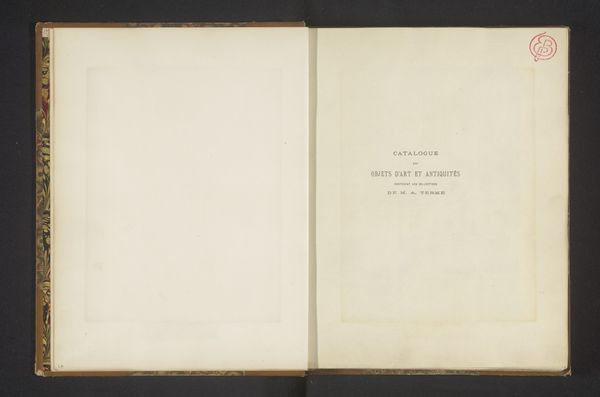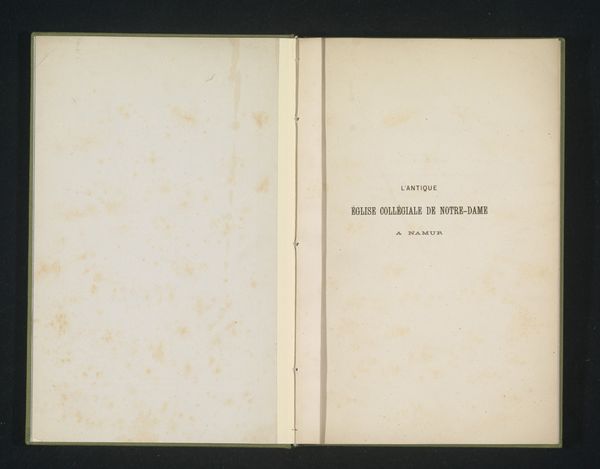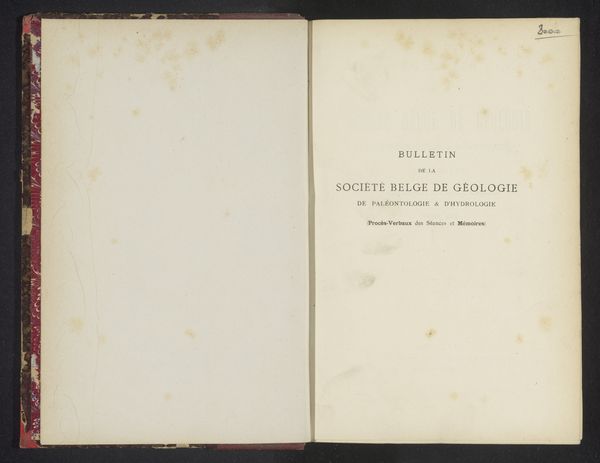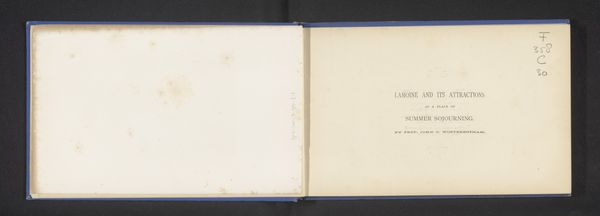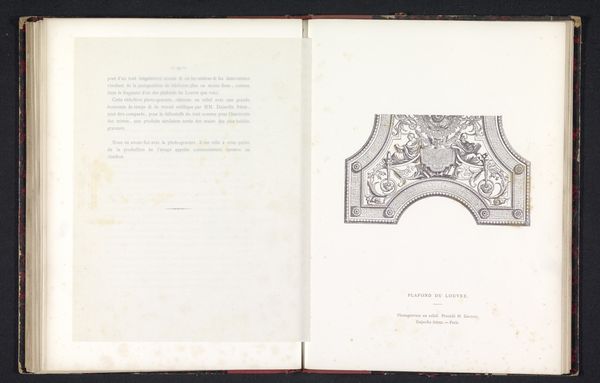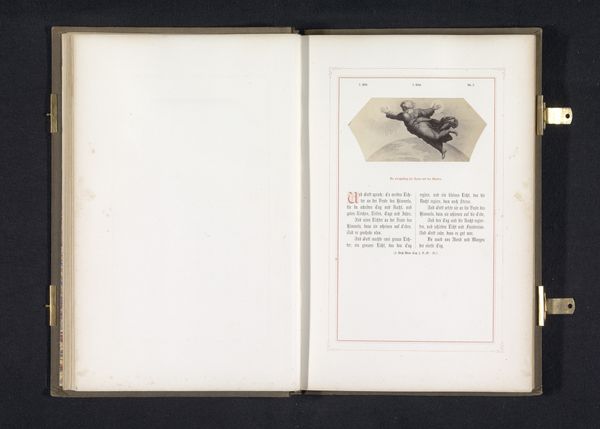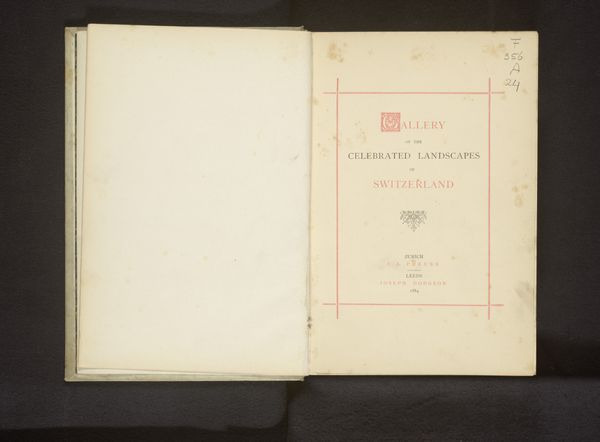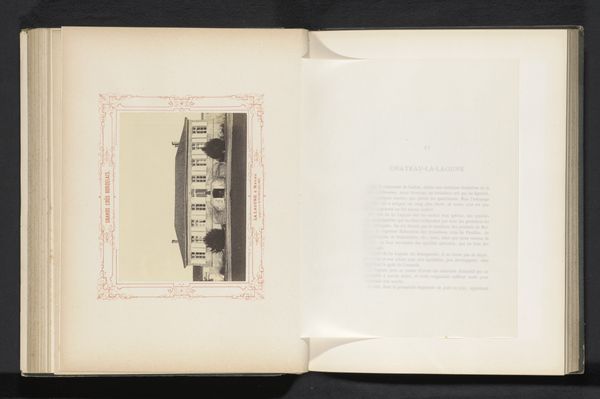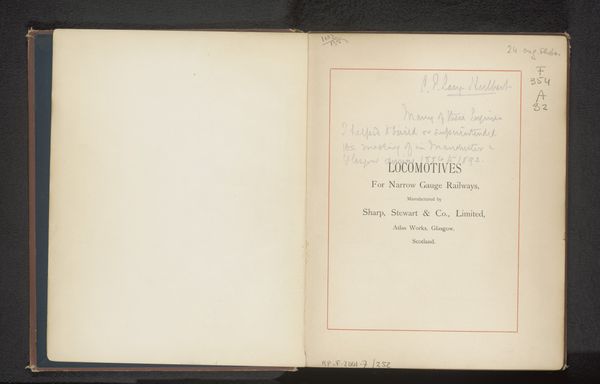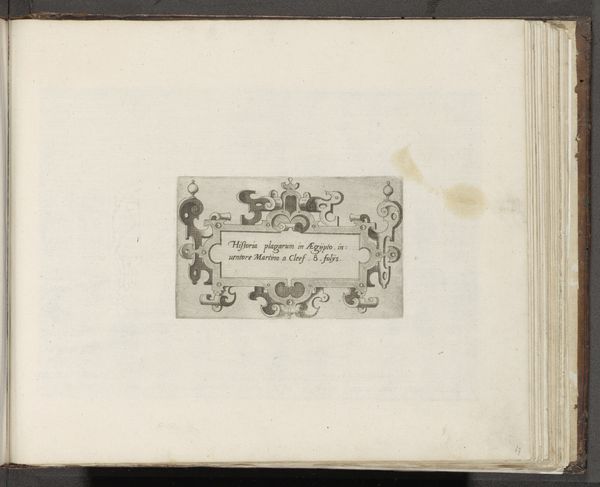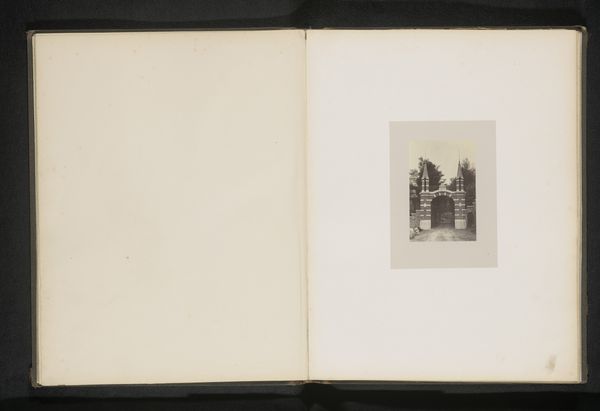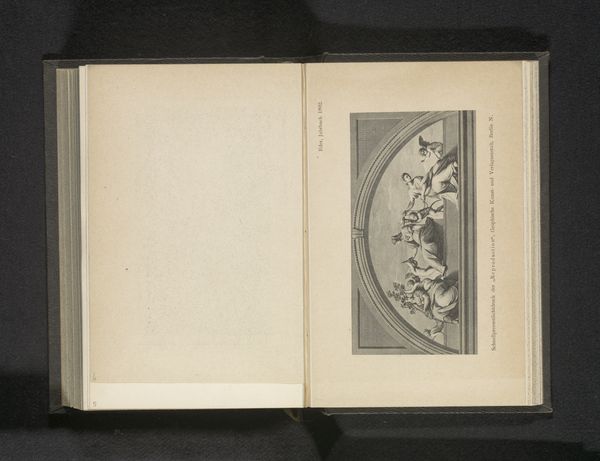
graphic-art, print, typography
#
graphic-art
#
aged paper
#
script typography
# print
#
hand drawn type
#
personal sketchbook
#
typography
#
hand-drawn typeface
#
fading type
#
thick font
#
handwritten font
#
delicate typography
#
decorative-art
#
historical font
Dimensions: height 280 mm, width 197 mm, thickness 20 mm
Copyright: Rijks Museum: Open Domain
Curator: Let’s discuss this fascinating example of decorative art entitled “National types and costumes” crafted in 1886 by Joseph Dodgson. It's quite interesting how this example of graphic art features hand drawn typography! What are your immediate observations? Editor: The aged paper really strikes me; you can see the craft and history imbued in it. I am drawn to the layout, the material choices – paper, ink – and the meticulous hand-rendering of each letterform. One can see and almost feel the slow and deliberate process by which this image came to be. Curator: Yes, the delicate typography certainly commands attention. Notice how the hand-drawn typeface adds to its historical font. The design elements are very interesting because of their emphasis of early methods and script typography. Editor: Absolutely, it’s clear Dodgson made intentional decisions regarding material culture that speak to his method. This decorative style seems very connected to late 19th century craft. The book’s materials indicate access to certain resources. Also the means to publish or, at minimum, print! Curator: Considering Dodgson’s intention and process, the choice of hand-drawn elements provides unique insights. The bold choices of color and hand made art really highlight these design elements. They demonstrate careful use and balance within the framed content. Editor: Indeed. Dodgson’s sketchbook pages reveal the laborious aspect that went into printing at the time. And thinking about "national types," how does this printed matter work to solidify a sense of identity, to shape collective understandings of these “types”? Curator: It really presents an intriguing example of this period through materiality. The aged appearance adds another dimension; and there are many layers worth exploring with continued review of art! Editor: I agree, tracing the origins and transformations that it implies encourages questions about how design functions both to record and shape histories. It's a piece that really brings history alive.
Comments
No comments
Be the first to comment and join the conversation on the ultimate creative platform.
